Best Box Office Flops, From 'Killers of the Flower Moon' to 'Tar'


Matthew Vaughn’s “Argylle” has become the first major box office flop of 2024. The action-comedy, backed by Apple and distributed by Universal Pictures, only opened to $17 million during its domestic debut and might not even make it to $100 million worldwide by the end of its run. For a $200 million production that boasts a star-studded cast with Henry Cavill, John Cena, Dua Lipa, Samuel L. Jackson and more, these box office numbers are more or less disastrous. Negative reviews (the film holds a 32% from 255 reviews) surely didn’t help make “Argylle” a must-see for audiences. The film joins a long list of Hollywood misfires, but they are not all created equally. In many unfortunate cases, even great films become box office flops.
More from Variety
From 'Barbarian' to 'Euphoria': The Best Needle Drops of 2022
Guillermo Del Toro's 'Pinocchio' Takes Over Twitter in Streaming Debut
No wonder Martin Scorsese went viral several years ago for railing against the industry’s obsession with box office numbers, particularly Hollywood’s tendency to judge films based on the strength of their opening weekend grosses.
“Since the ’80s, there’s been a focus on numbers. It’s kind of repulsive,” Scorsese once said. “The cost of a movie is one thing. Understand that a film costs a certain amount, they expect to at least get the amount back… The emphasis is now on numbers, cost, the opening weekend, how much it made in the U.S.A., how much it made in England, how much it made in Asia, how much it made in the entire world, how many viewers it got. As a filmmaker, and as a person who can’t imagine life without cinema, I always find it really insulting.”
Edgar Wright is another major who has taken a stance against box office valuation in recent years, once telling fans, “The three-day weekend is not the end of the story for any movie. People shouldn’t buy into that idea. Rating films by their box office is like the football fan equivalent to films. Most of my favorite films that are considered classics today were not considered hits in their time.”
Even Christopher Nolan recently told the AP that you can’t judge a film in weekends. “I know for myself the life of the movie is a much longer proposition in that, you look at other people’s films and indeed your own films in decades, not in weekends,” he said. “I think the science fiction genre is the one where the long view is everything. People revisit. They value science fiction in a very long-term way. The original ‘Blade Runner,’ nobody paid any attention to it on release, it was famously a flop. Then over time, people like myself (found it). I think I was 13 when I first saw a VHS tape.”
These acclaimed filmmakers certainly have a point, as many of the most critically acclaimed films this century got their starts as box office flops. Be it “Children of Men” or “The Master” or “Under the Skin,” it’s become abundantly clear that you can’t judge a movie by its gross. Below, Variety offers a selection of great films that flopped at the box office.
1. Killers of the Flower Moon

There is a lingering debate taking place about whether or not Apple Original Films is flopping or not. It’s more clear in the case of “Argylle” (see above), but Ridley Scott’s “Napoleon” cleared its own $200 million budget with $219 million worldwide, but not by too much. As for Martin Scorsese’s masterful “Killers of the Flower Moon,” it only grossed $67 million domestically and $156 million worldwide on a $200 million budget. Those numbers are certainly strong for an R-rated movie that runs well over the three-hour mark, but it was far from being profitable in theaters due to its inflated budget. Apple is a tech giant, of course, so the lines on what is hit-or-miss at the box office are blurred as it doesn’t place the same emphasis on box office as it does on streaming subscribers. But if a traditional studio released “Killers of the Flower Moon,” it would be branded a huge flop.
2. Beau Is Afraid

Ari Aster’s “Beau Is Afraid” is one of A24’s biggest flops, as it only grossed $11 million worldwide on a production budget estimated to be in the $35 million range. Aster’s directorial debut “Hereditary” was a monster hit for A24 with $82 million worldwide, while follow-up “Midsommar” turned in $48 million worldwide on a reported budget of $10 million. The third time wasn’t the charm for the visionary director, who divided moviegoers with his Joaquin Phoenix-starring odyssey about an anxiety-raddled man who ventures home to see his mother. It’s an audacious three-hour epic full of narrative gambles that pay off, stumble and confound. Sometimes all at the same time. It’s worth a try, and perhaps the film’s shelf life on Paramount+ With Showtime is attracting for fans.
3. Are You There God? It’s Me, Margaret.

Despite rave reviews and being based on Judy Blume’s beloved novel, writer-director Kelly Fremon Craig’s film adaptation of “Are You There God? It’s Me Margaret” flopped at the box office with $21 million worldwide on a $30 million budget. It’s a shame because the movie is such a winning delight. Craig brings the funny, flawed and all-too-realistic Margaret to the screen exactly as she is on Blume’s pages, and the young Abby Ryder Fortson’s effervescence in the lead role is infectious. McAdams rightfully became an Oscar dark horse for supporting actress (no nomination, alas!) and picked up many critic’s group prizes for her performance as Margaret’s mother Barbara, who gets an expanded role in the film as she struggles to adjust to being a stay-at-home mom.
4. Dumb Money

“Dumb Money” failed at the box office last fall with $13 million domestically and just $20 million worldwide, a big disappointment for the star-studded film that cost $30 million just to make. One would think a cast this packed would easily bring people out to the theaters (Paul Dano, Pete Davidson, America Ferrera, Nick Offerman, Anthony Ramos, Sebastian Stan, Shailene Woodley and Seth Rogen), but the SAG-AFTRA strike prevented the actors from making the press rounds and certainly played a factor into the film’s underperformance.
From Variety’s review: “A commercial movie needs a hero, and ‘Dumb Money,’ which is defter, more fun, and less labored than ‘The Big Short’ (it doesn’t keep chewing on its exposition), has a shaggy hero, of sorts, in Keith, played by Paul Dano as a kind of quirky, saintly, dough-faced financial savant. He wins you over to his cracked conviction.”
5. Guy Ritchie’s The Covenant

Variety film critic Owen Gleiberman named “The Covenant” one of the best films of the year midway through 2023, but strong reviews from critics weren’t enough to save the war movie from being a flop. The film earned just $21 million at the worldwide box office, a disappointing sum for a war movie and a near-disaster for a film that carried a production budget north of $50 million. Gleiberman wrote: “Jake Gyllenhaal, in his finest performance in years, plays a U.S. platoon leader who is wounded in an ambush, and Dar Salim is the wily, tough-as-nails Afghan translator who rescues him, in a journey of harrowing suspense, only to have Gyllenhaal return the favor by plunging back into the war. It’s an anguished, moving tale that redefines Ritchie as a deadly serious Hollywood artist.”
6. Tár
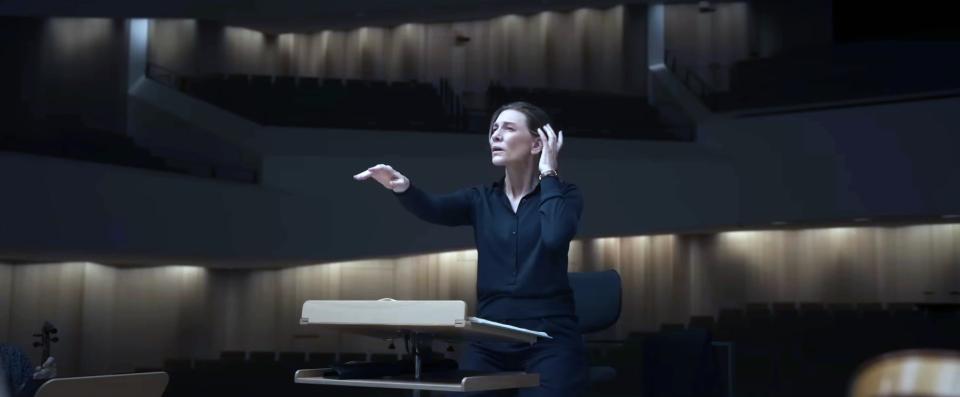
Todd Field’s psychodrama “Tár” starred Cate Blanchett in perhaps her most acclaimed role to date and earned six Oscar nominations, including best picture and best actress, but the Focus Features-backed release barely made it past $6 million at the domestic box office. The movie performed stronger overseas with a worldwide total of $24 million, but it was hardly enough to match a production budget that reportedly exceeded $30 million. Variety film critic Owen Gleiberman named “Tár” the best movie of 2022, writing, “It’s a staggering portrait of celebrity and power. It’s a seductive peek into the lofty bubble of the classical-music world. It’s an insidiously unfolding thriller about a brilliant artist, addicted to beauty, who’s undone by her own appetites.”
7. The Fabelmans

Steven Spielberg’s autobiographical family drama “The Fabelmans” earned rave reviews from film critics and 7 Academy Award nominations, including best picture and best director, but the movie followed the same path as his “West Side Story” adaptation (see blow) in failing to turn industry respect into box office numbers. The Universal-backed drama cost a reported $40 million to produce but only earned $17 million at the domestic box office. It managed to crack $42 million worldwide, but matching your production budget isn’t much of a success considering there was still a hefty marketing spend and a prolonged awards season press tour that cost additional millions for Universal.
From Variety’s review: “The master of escapist entertainment gets personal in this 150-minute self-portrait, crafting a loving homage to the complicated relationship with his parents that has informed so much of his work.”
8. Babylon
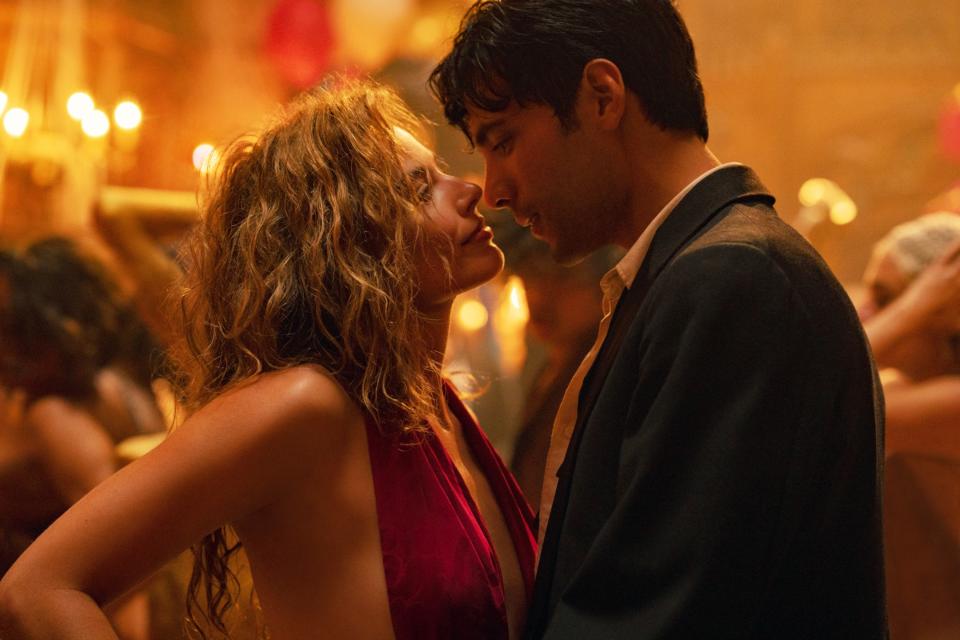
Damian Chazelle’s “Babylon” proved to be one of the most hate-it-or-love-it titles of 2022. The raucous look at silent film actors (played by the likes of Brad Pitt and Margot Robbie) struggling to adapt to sound pictures in Hollywood’s transformative 1920s and 1930s was over-the-top and overblown, but all the buzz about its debauchery did not translate to box office dollars. The film barely cracked $15 million at the domestic box office and tapped out with $63 million worldwide, a huge financial loss considering Paramount reportedly spent at least $80 million on the production and then millions more on marketing. “Babylon” may have its detractors, but its rollercoaster energy can’t be denied.
9. Women Talking

Sarah Polley won the Oscar for best adapted screenplay with “Women Talking,” which centers on the abused women of an isolated Mennonite community who gather to vote on whether they will stay in the colony or leave for a new home. Reviews were stellar for the movie and the awards buzz was strong, but “Women Talking” barely made it past the $5 million mark at the domestic box office and never cracked $10 million worldwide. The budget was reportedly in the eight-figure range. Variety film critic Peter Debruge hailed “Women Talking” as a “powerful act of nonviolent protest” and a “tough, uncompromising drama.”
10. She Said

Universal Pictures spent a reported $30 million to produce “She Said,” which stars Carey Mulligan and Zoe Kazan as The New York Times reporters who broke the Harvey Weinstein abuse story. Audiences mostly ignored the movie, as the it tapped out with $5.8 million at the domestic box office and grossed only $13 million worldwide. Variety film critic Owen Gleiberman praised “She Said” for being “tense, fraught, and compelling,” adding, “You may wonder how, exactly, ‘She Said’ is going to capture what that story felt like before it became a story. The movie accomplishes this by tapping into something that was always an essential part the Weinstein saga, but one I’ve never experienced as vividly as I did watching ‘She Said’: the pervasive, unfathomable fear that ruled Harvey Weinstein’s victims.”
11. Armageddon Time

James Gray’s autobiographical drama “Armageddon Time” earned favorable reviews out of the 2022 Cannes Film Festival, but solid notices and buzzy stars like Jeremy Strong and Anne Hathaway weren’t enough to bring in big box office. With a reported production budget in the $15 million range, the Focus Features released flopped with just $1.8 million at the domestic box office. The film tapped out with only $6 million worldwide. Gray tells the story of his own upbringing as a young Jewish-American boy coming of age in 1980s Queens. Variety film critic Owen Gleiberman praised Grey’s “boisterous skill,” adding, “It’s a skillful, exacting, beguiling movie.”
12. Three Thousand Years of Longing

All the great buzz for “Mad Max: Fury Road” couldn’t drive interest for director George Miller’s follow-up “Three Thousand Years of Longing,” starring Tilda Swinton as a scholar who finds herself meeting a djinn (Idris Elba) and contemplating what three wishes to make. The Amazon Studios release tanked at the box office with a paltry $2 million opening. It’s a shame given how idiosyncratic Miller’s vision is for the film. As the scholar and the djinn debate the ethics of wish-making, Miller flashes back through history to depict elaborate memories of the djinn’s three thousand years wandering the globe. Variety awards editor Clayton Davis wrote out of Cannes, “You’ll hear the awards comparisons that call it Miller’s version of ‘The Shape of Water’ (2017), Guillermo del Toro’s Oscar-winner for best picture, but it’s closer to Terrence Malick’s ‘The Tree of Life’ (2012) but with an accessible and soulful core.”
13. Bros

Billy Eichner made more than a few headlines after his Universal-backed comedy “Bros” flopped at the box office with a $4.8 million opener. The writer and star blamed the box office disappointment on homophobia, although surely the film’s lackluster marketing and odd release date played into its underperformance as well. Regardless, “Bros” is a consistently funny movie that sticks to a tried and true romantic-comedy formula. In other words, there’s no reason it shouldn’t be a big crowd-pleaser that attracts many eyeballs. As Variety wrote in its review: “‘Bros’ is confident enough being about queer characters that it doesn’t have to make them all likable. In fact, Eichner may not win you over at all.”
14. Nightmare Alley

Guillermo del Toro’s film noir “Nightmare Alley” struggled so much at the box office (the film earned $37 million worldwide on a $60 million production budget) that Martin Scorsese wrote an op-ed in the Los Angeles Times urging people to go see the movie in theaters. Scorsese said it was “distressing” how moviegoers were not turning out to see “Nightmare Alley,” which stars Bradley Cooper as a con man who rises the ranks from carnival worker to world-famous illusionist. Variety’s Peter Debruge named “Nightmare Alley” a critics pick and called it “a bravura noir” in his rave review, adding, “The ‘Shape of Water’ director assembles a dream ensemble for this spectacular sideshow attraction, including Cate Blanchett as the iciest femme fatale we’ve seen in ages.” Despite tanking at the box office, “Nightmare Alley” dazzled Academy voters enough to earn four Oscar nominations, including best picture. The film is now available to stream on Hulu and HBO Max.
15. West Side Story

Musicals had a rough go at the box office in 2021 (see the low returns for “In the Heights” below). Steven Spielberg’s “West Side Story” adaptation dazzled film critics, but U.S. moviegoers largely ignored the film as it grossed just $38 million at the domestic box office. The film’s global haul perked up to $73 million, but that wasn’t good enough considering the musical cost well over $100 million to produce. One can only hope the film’s debut on streaming via Disney Plus in March 2022 is bringing in fresh eyeballs. “West Side Story” earned seven Oscar nominations, including bids for picture, director and supporting actress for frontrunner Ariana DeBose. Variety praised “West Side Story” in its review, calling it “infectious” and commending Spielberg for making the material his own.
16. In the Heights

Jon M. Chu’s sensational adaptation of Lin-Manuel Miranda’s Tony winner “In the Heights” met a dismal fate at the box office in summer 2021, grossing only $29 million in the U.S. and under $45 million worldwide. Variety’s Owen Gleiberman raved of the movie: “Miranda’s songs are a blend of electrifying hip-hop and salsa and Broadway lyricism, and director Jon M. Chu stages it all with a bravura playfulness, whether he’s setting a production number about upscale dreams in a public swimming pool or letting two lovers loose on the side of a building. ‘In the Heights’ shows us the neighborhood from literally every angle, capturing the lives of people caught up in a delirious, at times heartbreaking dance between the land of their ancestors and the America they’ve made their own.” The film is now available to stream on HBO Max.
17. The Last Duel

Ridley Scott’s period epic “The Last Duel” is one of the biggest box office bombs of the pandemic era. The film had a production budget over $100 million and only grossed $10 million in the U.S. and $30 million at the worldwide box office. Those numbers make it a historic flop, especially for major stars such as Matt Damon and Ben Affleck. The abysmal box office was unfortunate considering Scott cooked up a “rather interesting” historical epic and “an engrossing drama of ambition, romance, and political chicanery,” as Variety’s Owen Gleiberman wrote in his review. Scott lashed out at millennials for killing the movie at the box office, telling Marc Maron, “I think what it boils down to — what we’ve got today [are] the audiences who were brought up on these fucking cellphones. The millennials do not ever want to be taught anything unless you’re told it on a cellphone.” “The Last Duel” is now streaming on HBO Max.
18. The Many Saints of Newark

David Chase’s “Sopranos” prequel movie “The Many Saints of Newark” was perhaps the biggest victim of Warner Bros.’ decision to put all of their 2021 films on streaming via HBO Max on the same day they opened in theaters. “Newark” tanked at the box office with just $8 million in the U.S. and only $12 million worldwide, although studio executives expressed satisfaction with how the prequel performed on streaming. It’s safe to assume that the generations of viewers who were used to watching “The Sopranos” on television or streaming stuck with that viewing method for “The Many Saints of Newark.” Variety’s Owen Gleiberman called the prequel “a lively and convincing origin story” that’s “compulsively authentic and watchable the way that the show was.” The film is now available to stream on HBO Max.
19. The Suicide Squad

Would James Gunn’s “The Suicide Squad” have been a bigger blockbuster had it not been for the pandemic and Warner Bros.’ decision to stream the movie on HBO Max at the same time it opened in theaters? We can only hope, as Gunn’s savage DC Comics tentpole deserved to gross far more than its $55 million in the U.S. and $167 million worldwide. Those final tallies are painfully low for a comic book tentpole, especially one carrying a $185 million production budget. Variety praised Gunn’s vision as “cunningly scuzzy” in the way that David Ayer’s “Suicide Squad” should’ve been. The review adds: “It’s a team-of-scruffy-cutthroats origin story that feels honestly dunked in the grunge underworld, and shot for shot it’s made with a slicing ingenuity that honors the genre of ‘The Dirty Dozen.’” Fortunately, it appears “The Suicide Squad” found its audience on HBO Max as sequel series “Peacemaker” was a slam-dunk hit for the streaming service this year and will return for a second season.
20. Ali

Will Smith is expected to land an Oscar for best actor thanks to his performance in “King Richard,” 20 years after earning his first nomination for playing Muhammed Ali in Michael Mann’s biographical sports drama “Ali.” The movie earned a respectable $87 million, which would’ve been a success had the budget for the film not skyrocketed past the $100 million. From Variety’s original review: “Michael Mann’s ambitious and cold study of the great boxer and cultural icon possesses an informed, intelligent perspective and is never uninteresting to watch… Technically, the production displays Mann’s customary mastery of image and sound. Emmanuel Lubezki’s cinematography has a deliberate rough edge that lends a verite vibrancy to the images, while John Myhre’s impeccable production design meshes seamlessly with the many actual historical locations Mann insisted upon using. Craft contributions are first-class all the way.”
21. The Rhythm Section
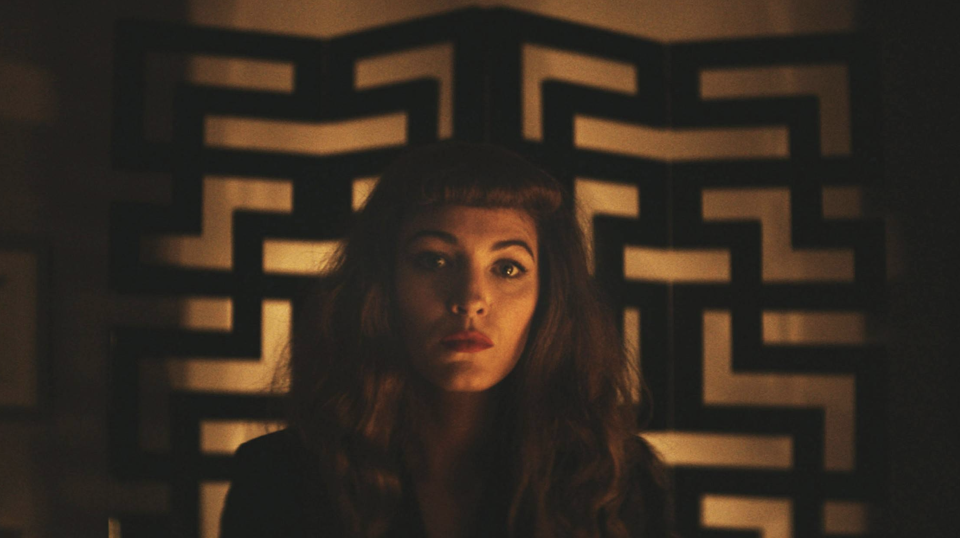
Grossing under $6 million worldwide on a production budget of $50 million, the Blake Lively-starring action thriller “The Rhythm Section” was one of the biggest box office flops of 2020. It’s quite a shame considering what a visceral piece of action filmmaking the film is courtesy of its talented director Reed Morano (an Emmy winner for “The Handmaid’s Tale” who should have easily been on Marvel’s call list after this directorial effort). Lively stars as a woman who sets out for revenge after discovering the plane crash that killed her family was a terrorist attack. The film is “a dark, broody and unexpectedly human payback thriller,” wrote Variety’s Peter Debruge in his review. Morano puts some incredible action scenes on display, including a one-take fight sequence that deserved far more attention when the film opened.
22. Ad Astra

“Ad Astra” barely broke even at the box office with its $127 million worldwide gross on a budget just under $100 million, but the film was mostly ignored in the U.S. with a domestic haul of $50 million. That’s a flop when you have A-lister Brad Pitt front and center in an epic space odyssey (especially during a career peak thanks to his awards season press tour for “Once Upon a Time in Hollywood”). Far from your standard action film, “Ad Astra” projects the intimate story of a man wrestling with the legacy of his father on a canvas as expansive as the solar system. As Variety wrote in its review: “James Gray, the director and co-writer of ‘Ad Astra,’ is the furthest thing you could imagine from a space dude; but in taking on his first blockbustery sci-fi project, he handles the vast logistical challenges of staging an epic space adventure with a surefire hand and a sense of detail, pace and control that are notably accomplished, if not quite Kubrickian. Gray proves beyond measure that he’s got the chops to make a movie like this.”
23. Doctor Sleep
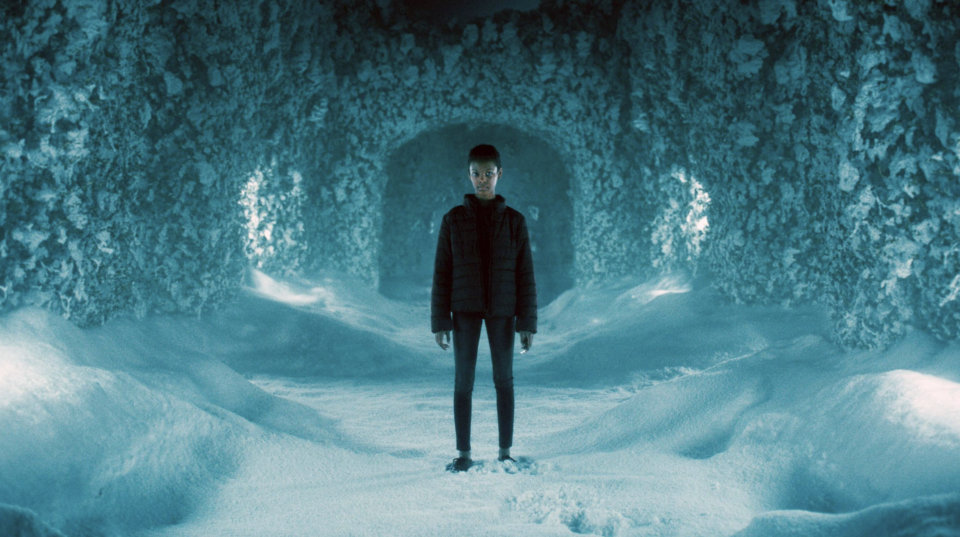
Expectations for Mike Flanagan’s “Doctor Sleep” were high considering it’s a sequel to “The Shining” and that horror remains one of the most profitable genres at the box office. Alas, the film tanked domestically with just $31 million. That might be because Flanagan delivered a more slow-burn horror trip than your standard Blumhouse creeper or jump scare-filled “It” movie. As Variety’s Owen Gleiberman wrote in his review: “I still don’t know if ‘The Shining’ needed a second act, but ‘Doctor Sleep’ presents one that’s fresh and unsettling enough to justify its existence. The film runs on for an unnecessarily extended 151 minutes, and that’s undoubtedly a by-product of the success of ‘It,’ the lengthy 2017 adaptation of the first half of King’s killer-clown novel. But in this case the contrast only serves to heighten how ‘Doctor Sleep,’ unlike the whack-a-demon ‘It’ films, at least uses its length to sink into a mood of genuine contemplative dread.”
24. Annihilation

Paramount knew Alex Garland’s heady, existential science-fiction thriller “Annihilation” was a giant risk and sold off the film’s international rights to Netflix as a result. Despite star power from Natalie Portman and rave reviews, “Annihilation” failed at the box office with just $32 million in the U.S. despite a $40 million production budget. Portman plays a biology professor tasked with entering a mysterious quarantined zone of mutating organisms in order to figure out what happened to her missing husband. “Annihilation” was a box office flop, but it remains one of the best science-fiction films of the 2010s. From Variety’s review: “Alex Garland follows up ‘Ex Machina’ with a visually stunning, imagination-tickling sci-fi thriller in which Natalie Portman investigates an extra-terrestrial threat… the film achieves that rare feat of great genre cinema, where audiences are not merely thrilled (the film is both intensely scary and unexpectedly beautiful in parts) but also feel as if their minds have been expanded along the way.”
25. Destroyer

Karyn Kusama’s bleak detective thriller “Destroyer” boasted an Oscar buzzy performance from Nicole Kidman, but only grossed $1.5 million at the U.S. box office. Internationally, “Destroyer” ended its run with $5.5 million. Those grosses make the drama one of Kidman’s biggest flops. The film stars Kidman as a former police officer who takes revenge against the gang that was at the center of a blown case from years prior. From Variety’s review: “Nicole Kidman goes dark — and nearly unrecognizable — in a role that all but obliterates the idea that audiences require likable protagonists…Kidman has always been a chameleon, but in this case, she doesn’t merely change her color (or don a fake nose, à la ‘The Hours’); she disappears into an entirely new skin, rearranging her insides to fit the character’s tough hide.”
26. Blade Runner 2049

“Whereas the original ‘Blade Runner’ was (eventually) embraced for its unrealized potential, its sequel ranks as one of the great science-fiction films of all time,” Variety’s Peter Debruge wrote in his rave review of Denis Villeneuve’s sci-fi masterpiece “Blade Runner 2049.” The movie didn’t even cross the $100 million in the U.S., a death knell for a studio-backed franchise tentpole. “2049” reportedly lost Alcon Entertainment up to $80 million. Regardless, the film won Oscars for cinematography and visual effects and remains a science-fiction touchstone of the 2010s. As Debruge raves, “Villeneuve earns every second of his 2 hours and 44 minute running time, delivering a visually breathtaking, long-fuse action movie whose unconventional thrills could be described as many things — from tantalizing to tedious — but never artificially intelligent.”
27. The Assassination of Jesse James by the Coward Robert Ford

Andrew Dominik’s “The Assassination of Jesse James by the Coward Robert Ford” is widely considered to have the best cinematography of the 21st century, but moviegoers barely noticed when the movie opened in 2007 and grossed $3.9 million in the U.S. and just over $11 million worldwide. These are dire numbers when your production budget is $30 million. And yet, critics have remained on “Jesse James’” side for over a decade now. Variety hailed the film as “one of the best Westerns of the 1970s, which represents the highest possible praise,” adding, “A ravishing, magisterial, poetic epic that moves its characters toward their tragic destinies with all the implacability of a Greek drama, this film is a magnificent throwback to a time when filmmakers found all sorts of ways to refashion Hollywood’s oldest and most durable genre.”
28. Children of Men
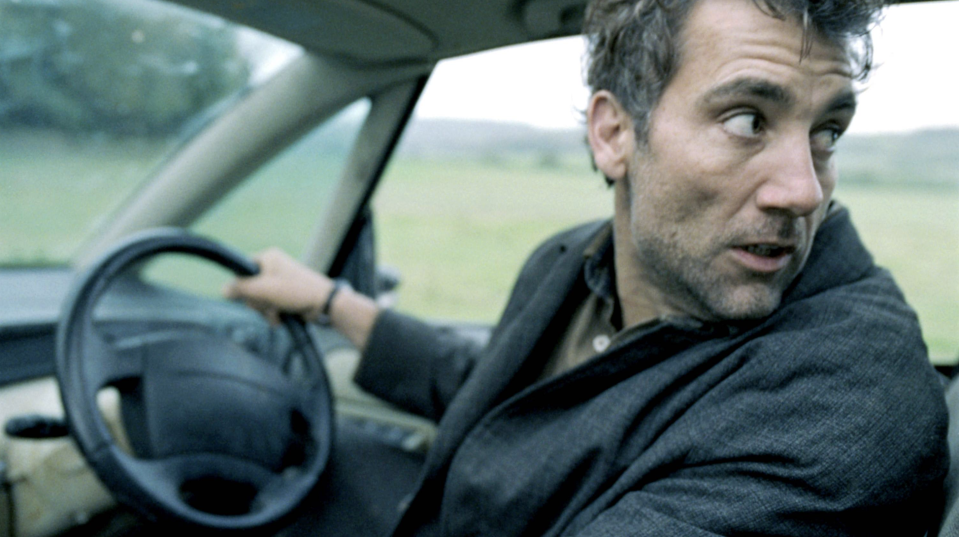
Alfonso Cuaron’s “Children of Men” is often considered one of the greatest science-fiction movies of the 21st century, but it started as a box office bomb with just $35 million in the U.S. on a $75 million production budget. Not even the film’s worldwide gross ($70 million) could make it break even. Set in 2027, the films stars Clive Owen as civil servant who must help the first pregnant women in two decades escape the chaos of a world on the brink of collapse. The film’s critical adoration helped push it to three Oscar nominations, including adapted screenplay. From Variety’s review: “The film more than delivers on the action front — not in bang-for-your-buck spectacle but in the kind of gritty, docu-like sequences that haul viewers out of their seats and alongside the main protagonists. Along with camera operator George Richmond, who shot the entire movie handheld in 16 weeks, Cuaron orchestrates several lengthy single takes that have a frontline feel.”
29. Fight Club

“Rarely has a film been so keyed into its time — in ways that, commercially, will be both advantageous and damaging as ‘Fight Club,’” Variety wrote in its original review of David Fincher’s 1999 classic. “On one hand, the film is the perfect reflection of the millennium malaise that pits pervasive nihilism against an urgent need for something to grasp onto; on the other, it caps off a period in which the media and Washington have never been so assiduous in pointing the finger at Hollywood over the impact of screen violence on society and on youth in particular.” It might be one of Fincher’s most popular films now, but “Fight Club” flopped back in 1999 with $37 million at the U.S. box office on a production budget north of $60 million. As Variety’s review noted, “Despite certain hostility from some sectors, especially in the U.S., this bold, inventive, sustained adrenaline rush of a movie about a guru who advocates brutality and mayhem should excite and exhilarate young audiences everywhere.”
30. Grindhouse

Quentin Tarantino is one of the rare directors that can get adults into movie theaters, but that wasn’t the case with “Grindhouse.” Clearly audiences just weren’t interested in a three hour double feature homage to the exploitation era from Tarantino and Robert Rodriguez, as “Grindhouse” flopped at the box office with just $25 million in the U.S. (each entry was released separately overseas). Critics were mostly impressed, including Variety: “The 1970s exploitation movie gropes, bites, kicks, slugs, blasts, smashes and cusses its way back to life in ‘Grindhouse,’ a ‘Rodriguez/Tarantino double feature’ that lovingly resurrects a disreputable but cultishly embraced form of era-specific film production and exhibition…As genre rehabs go, ‘Grindhouse’ is more daring and audacious than most, partly due to its conception as an entire program complete with two pictures, four tailor-made trailers and various for-real interstitial bits, but more so because of its stylistic fidelity to its source material.”
31. Hugo

Martin Scorsese’s “Hugo” was hardly a box office misfire with $73 million in the U.S. and $185 million worldwide, but those numbers still made the film a financial disappointment considering the production budget ran as high as $170 million. Based on Brian Selznick’s 2007 book “The Invention of Hugo Cabret,” the movie stars Asa Butterfield as a young boy who gets caught up in a mystery involving his late father’s automaton and the pioneering filmmaker Georges Méliès. “Hugo” was nominated for 11 Oscars, including best picture, and was cited as a new family film classic by many critics upon release. As Variety noted: “In attempting to make his first film for all ages, Martin Scorsese has fashioned one for the ages. Simultaneously classical and modern, populist but also unapologetically personal, ‘Hugo’ flagrantly defies the mind-numbing quality of most contemporary kid pics and instead rewards patience, intellectual curiosity and a budding interest in cinema itself.”
32. The Master
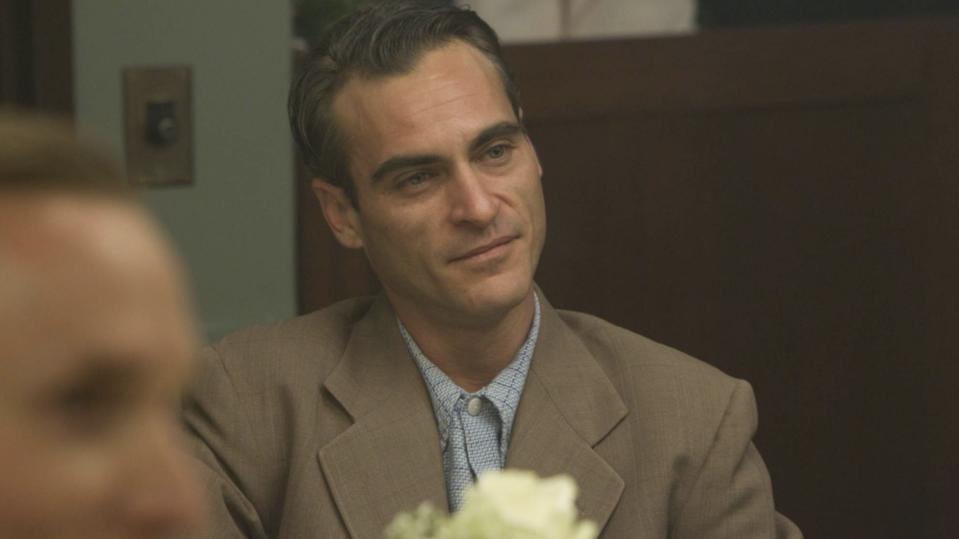
“With its bravura technique and superbly synched turns from Joaquin Phoenix and Philip Seymour Hoffman, ‘The Master’ release should generate robust returns and furious discussion long after its hugely anticipated bow,” Variety wrote in its review of Paul Thomas Anderson’s searing character study. That prediction didn’t exactly pan out. Despite launching to $242,127 in five theaters (a then-record at the indie box office), “The Master” failed to gain momentum nationwide and ended its run with only $16 million at the U.S. box office. Cast members Hoffman, Phoenix and Amy Adams all received Academy Award nominations for their galvanizing performances.
33. Inherent Vice

Another great Paul Thomas Anderson directorial effort that floundered at the box office was his Thomas Pynchon adaptation “Inherent Vice,” which only mustered up $8 million at the U.S. box office and $14 million worldwide on a $20 million production budget. A shaggy and aimless-feeling neo-noir was always going to be a tough sell, even with one of Anderson’s starriest ensemble casts (Joaquin Phoenix, Josh Brolin, Owen Wilson, Reese Witherspoon, Benicio del Toro and more). From Variety’s review: “The ’60s are over, everyone is on the run, and there’s nowhere to hide in Paul Thomas Anderson’s audacious, fiercely funny Pynchonian stoner noir… Anderson’s seventh feature film is a groovy, richly funny stoner romp that has less in common with ‘The Big Lebowski’ than with the strain of fatalistic, ’70s-era California noirs (‘Chinatown,’ ‘The Long Goodbye,’ ‘Night Moves’).
34. The Iron Giant

“The Iron Giant” stands as one of the greatest animated movies of all time, but the Brad Bird-directed buddy adventure got its start as a box office flop with just $23 million in the U.S. on a hefty $70 million production budget. From Variety’s review: “A visually appealing, well-crafted film, ‘The Iron Giant’ is an unalloyed success that works on several levels. Equally potent as political allegory and as animated family entertainment, Brad Bird’s ambitious, intelligent freshman feature, cleverly set in 1950s small-town America, effectively references everything from Cold War ideology to B-movie conventions, but it never loses sight of its central narrative hook, the friendship of a boy and a giant robot.”
35. Mother!
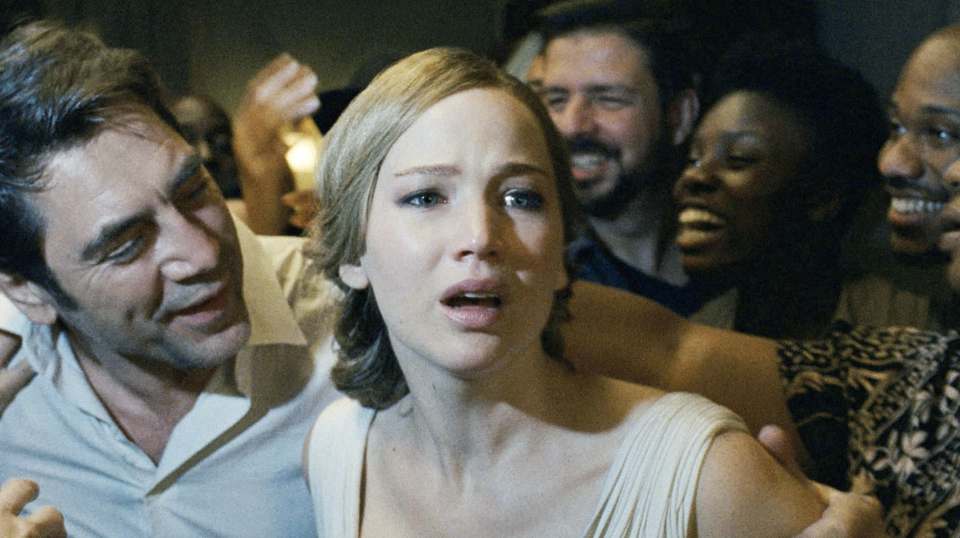
Few movies over the last decade have been as love-it-or-hate-it as Darren Aronofsky’s allegorical thriller “Mother!” Despite an onslaught of WTF buzz and the star power of Jennifer Lawrence front and center, “Mother!” couldn’t even crack the $20 million mark in the U.S. on a $30 million production budget. As Variety’s Owen Gleiberman wrote in his review: “Darren Aronofsky’s head-trip horror movie, starring Jennifer Lawrence as a woman who slips down a rabbit hole of paranoia, is dazzling on the surface, but what lies beneath? Maybe nothing… If the only thing we wanted, or expected, a horror film to do was to get a rise out of you — to make your eyes widen and your jaw drop, to leave you in breathless chortling spasms of WTF disbelief — then Darren Aronofsky’s ‘Mother!’ would have to be reckoned some sort of masterpiece.”
36. Under the Skin

Even with Scarlett Johansson front and center, it was always going to be a challenge for “Under the Skin” to make back its $13 million production budget given what an ambitious and experimental alien invasion movie it is. Nothing about “Under the Skin” is mainstream, so the film’s $2.6 million U.S. gross was not too surprising even if the movie is widely considered to be one of the great films of the 2010s. Johansson plays an alien stalking the streets of Scotland in order to lure men to her home and harvest their bodies for her home planet. Large stretches of the film feel like a documentary, with Johansson being filmed incognito on the streets as she roams around in characters. Other stretches of the film feel like unforgettable montages of avant garde horror. However you want to describe “Under the Skin,” it’s objectively unforgettable.
37. Warrior

Gavin O’Connor’s “Warrior” is one of the more moving sports dramas of the 2010s. The film casts Joel Edgerton and Tom Hardy as brothers who are pitted against one another in a mixed martial arts tournament, forcing them to confront their shared history and their family bonds. Nick Nolte was nominated for the Oscar for best supporting actor thanks to his performance as the father of Edgerton and Hardy’s characters, but the movie couldn’t match its $25 million production budget worldwide and only grossed $13 million in the U.S. From Variety’s original review: “’Warrior’ is an improbably effective and affecting mix of raw emotions and exciting smackdowns… Occasionally recalling the bruised and brooding virility of a young Marlon Brando, Hardy is arrestingly intense as Tommy, by turns implosive and explosive as he alternates between guilt and rage, savagery and self-loathing.”
38. Steve Jobs

One would think an Oscar-baiting biographical drama about Steve Jobs from Oscar winners Danny Boyle and Aaron Sorkin would light up the box office for adult moviegoers, but that wasn’t the case for “Steve Jobs” in fall 2015. The movie only grossed $17 million at the domestic box office and $34 million worldwide, a flop for a movie costing in the $30 million range just to produce. Michael Fassbender and Kate Winslet were Oscar nominated for their performances as Steve Jobs and Joanna Hoffman. From Variety’s review: “An enthralling performance by Michael Fassbender fuels this brilliant, infuriating and richly unconventional take on the life of an American visionary… Straining like mad to be the ‘Citizen Kane’ of larger-than-life techno-prophet biopics, this is a film of brash, swaggering artifice and monumental ego, a terrific actors’ showcase and an incorrigibly entertaining ride.”
Best of Variety

 Yahoo News
Yahoo News 
